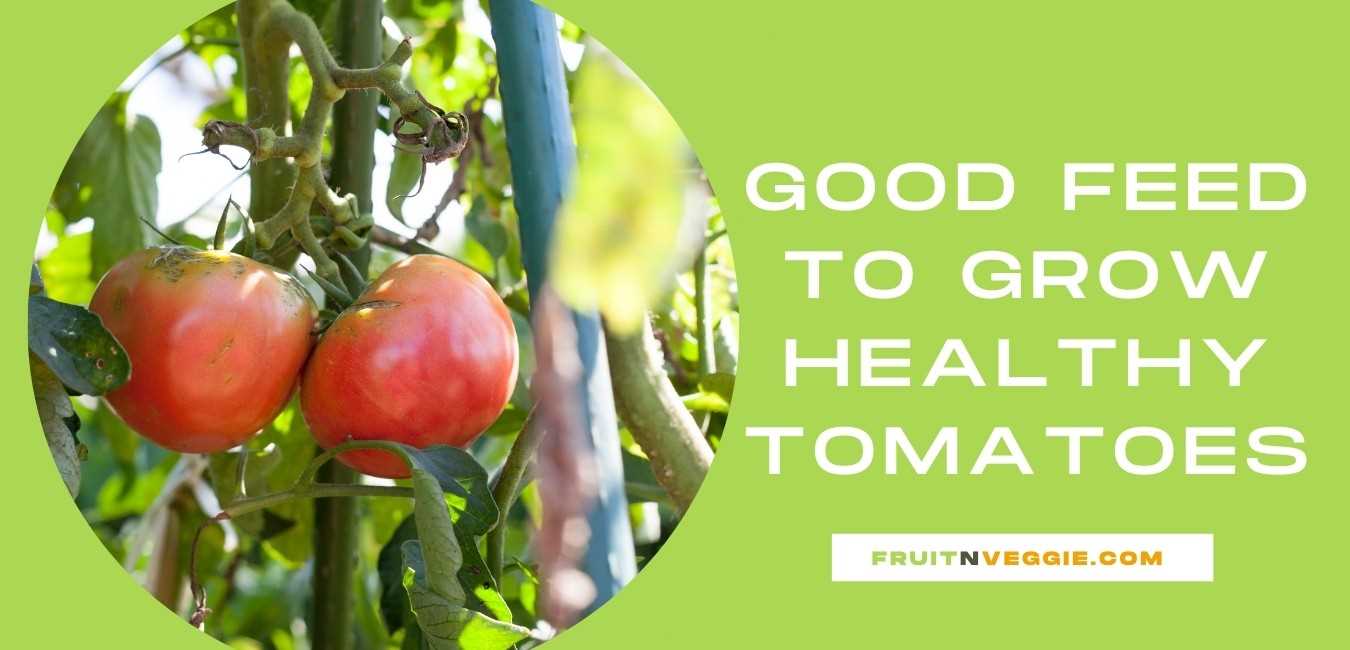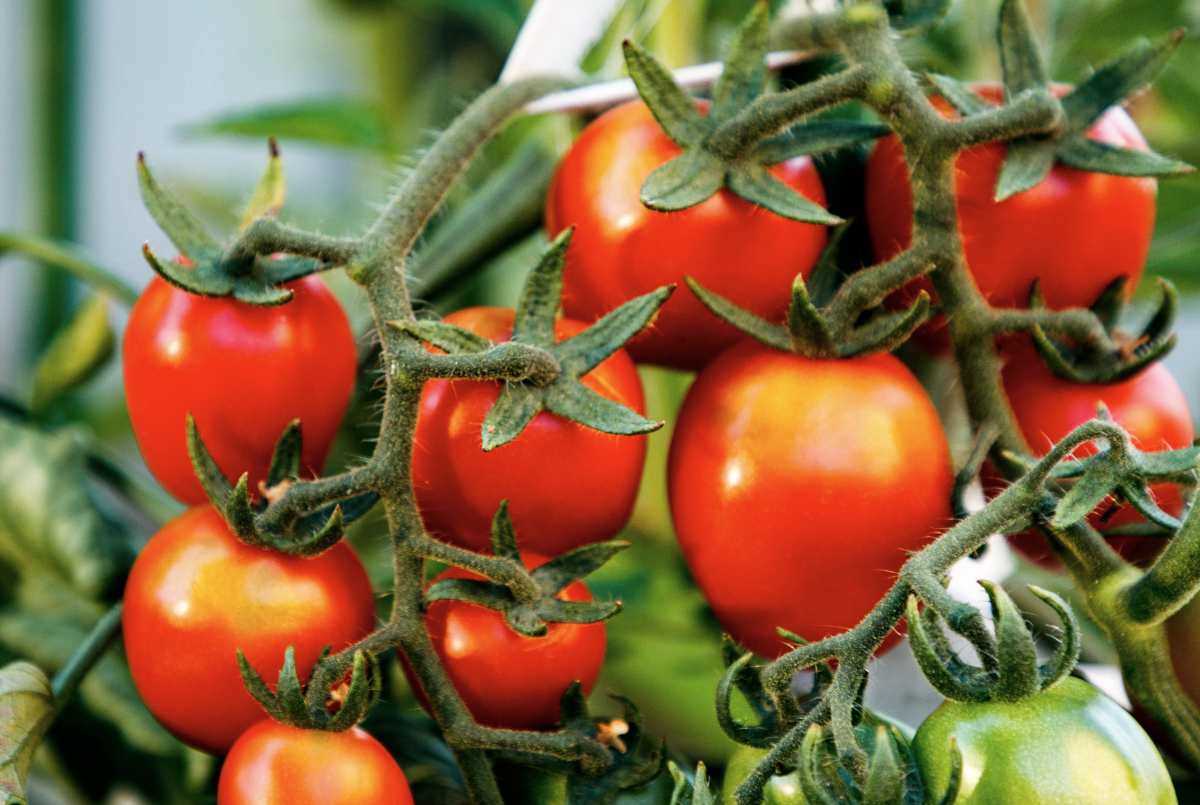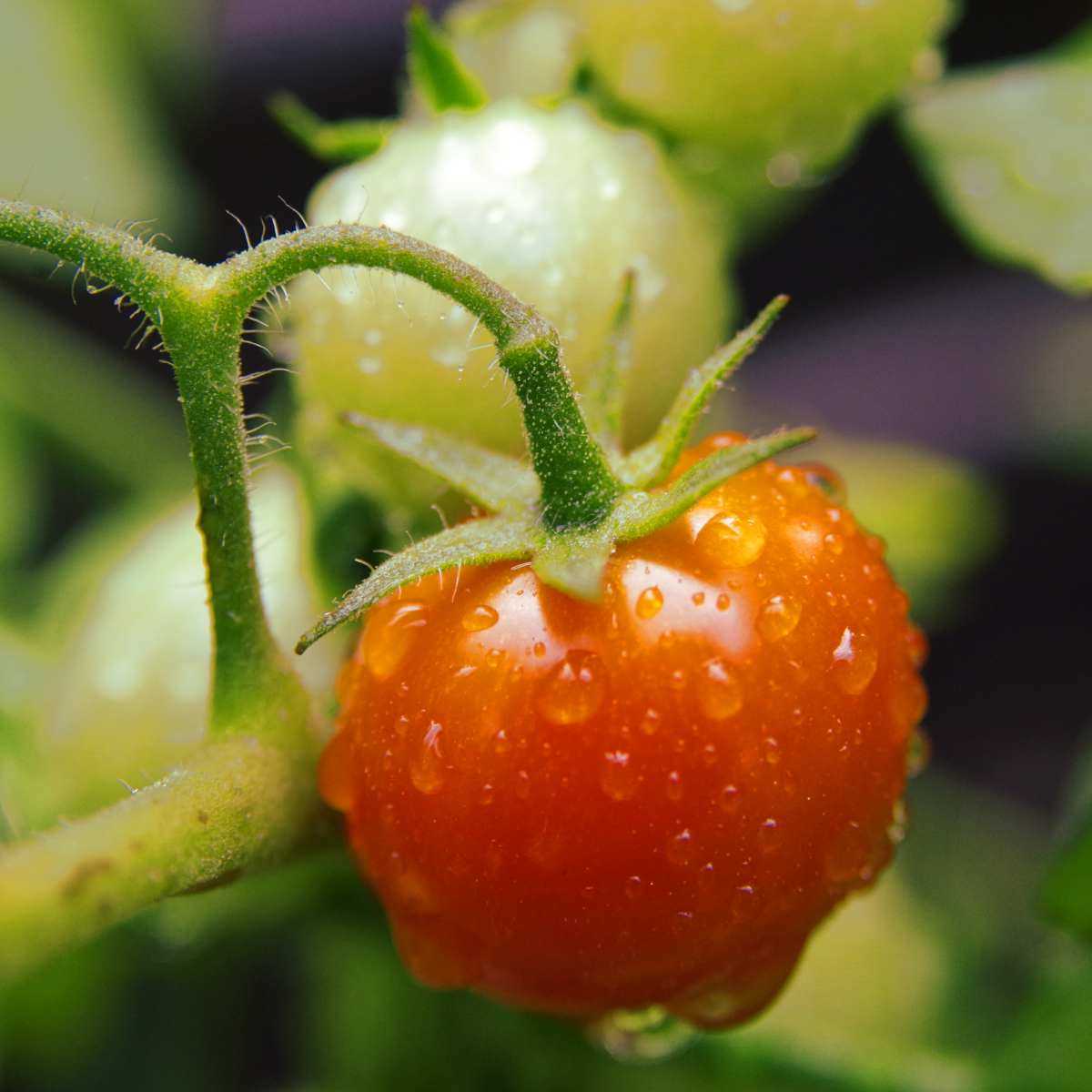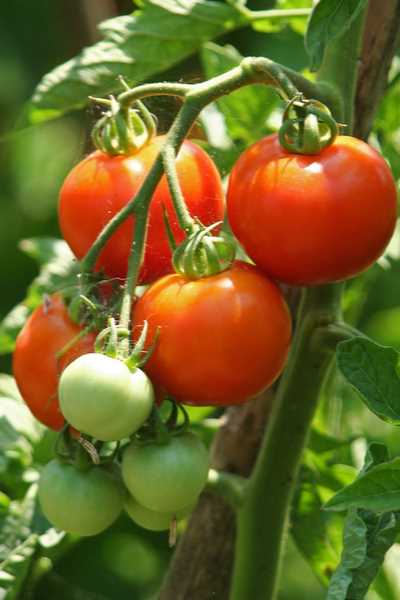- Importance of Balanced Fertilisation
- Optimal Nutrient Levels
- Benefits of Balanced Fertilisation
- Implementing Balanced Fertilisation
- The Role of Nutrients in Tomato Growth
- 1. Nitrogen (N)
- 2. Phosphorus (P)
- 3. Potassium (K)
- 4. Calcium (Ca)
- 5. Magnesium (Mg)
- 6. Sulfur (S)
- 7. Micronutrients
- Understanding the Nutritional Needs of Tomatoes
- Macronutrients
- Micronutrients
- Fertilizer Application
- Conclusion
- The Importance of Early April Fertilisation
- Essential Nutrients for Tomatoes in Early April
- 1. Nitrogen
- 2. Phosphorus
- 3. Potassium
- 4. Calcium
- 5. Magnesium
- 6. Micronutrients
- Recommended Fertilisers for Tomatoes in Early April
- 1. Nitrogen (N)
- 2. Phosphorus (P)
- 3. Potassium (K)
- 4. Calcium (Ca)
- 5. Magnesium (Mg)
- 6. Micronutrients
- Application Techniques for Balanced Fertilisation
- Soil Testing
- Choose the Right Fertilisers
- Follow the Recommended Dosage
- Apply Fertiliser at the Right Time
- Even Distribution
- Incorporate Fertiliser into the Soil
- Watering After Application
- Monitor Plant Response
- Monitoring and Adjusting Fertiliser Regimen for Tomatoes
- Soil Testing
- Additional Nutrient Monitoring
- Adjusting the Fertiliser Regimen
- “Question-Answer”
- What are the essential nutrients for tomatoes?
- Why is balanced fertilisation important for tomatoes?
- When should I apply fertilisers to tomatoes?
- How much nitrogen should I provide to tomatoes?
- What are trace elements and why are they important for tomatoes?
- Can I use organic fertilisers for tomatoes?
- “Video” There is no better fertilizer for tomatoes! Bring it in when planting seedlings
Tomatoes are one of the most popular and widely cultivated vegetables in gardens around the world. Growing healthy and productive tomato plants requires careful attention to their nutritional needs. Early April is a critical time to provide the essential nutrients that will ensure strong growth and a bountiful harvest. In this guide, we will explore the importance of balanced fertilisation for tomatoes and discuss the key nutrients needed for optimal plant development.
When it comes to tomato cultivation, a balanced approach to fertilisation is crucial. This means providing the right amount of each nutrient that the plants require, without overdoing it. Too much of certain nutrients can be just as harmful as not enough. This is why it is important to understand the specific needs of tomato plants and adjust the fertiliser accordingly.
There are several essential nutrients that tomatoes require for healthy growth. These include nitrogen, phosphorus, potassium, calcium, magnesium, and trace elements such as iron and manganese. Each nutrient plays a vital role in various aspects of plant development, from leaf and stem growth to flower and fruit production. It is important to provide these nutrients in the right proportions and at the right time to ensure that tomato plants receive a balanced diet.
In early April, when tomato seedlings are establishing themselves in the garden, it is important to provide a fertiliser that is rich in phosphorus and potassium. These nutrients promote root development and help plants withstand transplant shock. A fertiliser with a ratio of 5-10-10 or similar is ideal for this stage. Additionally, adding compost or organic matter to the soil can provide a slow-release source of nutrients throughout the growing season.
Importance of Balanced Fertilisation

A balanced fertilisation is crucial for the healthy growth and development of tomato plants. Providing the right amount and combination of essential nutrients at the right time can significantly improve the overall yield and quality of tomatoes.
Optimal Nutrient Levels

- Each nutrient plays a specific role in the growth and development of tomatoes, and a deficiency or excess of any nutrient can negatively impact plant health. Balancing the nutrient levels ensures that the plants receive all the necessary elements for their growth.
- Nitrogen (N), phosphorus (P), and potassium (K) are the primary macronutrients needed in higher amounts. Nitrogen promotes leaf and stem growth, phosphorus supports root development and flower formation, while potassium enhances fruit development and overall plant vigor.
- In addition to the macronutrients, tomatoes also require secondary nutrients (calcium, magnesium, and sulfur) and micronutrients (iron, manganese, zinc, etc.) in smaller quantities for their optimal growth and development.
Benefits of Balanced Fertilisation
Achieving a balanced fertilisation program for tomatoes offers several benefits:
- Improved Yield: Providing plants with the required nutrients in balanced proportions ensures optimal growth and development, leading to increased yields of high-quality tomatoes.
- Enhanced Disease and Pest Resistance: Balanced fertilisation strengthens the overall health of tomato plants, making them more resistant to diseases and pests.
- Better Nutritional Value: When plants receive a balanced supply of nutrients, the resulting tomatoes tend to have higher nutrient content, including vitamins, minerals, and antioxidants.
- Reduced Environmental Impact: By supplying nutrients in the proper amounts, farmers can minimize the risk of nutrient runoff and leaching into nearby water bodies, reducing the negative environmental impact.
Implementing Balanced Fertilisation

To implement a balanced fertilisation program for tomatoes, it is essential to analyze the soil and understand its nutrient content. Soil testing can provide valuable information about nutrient deficiencies or excesses, allowing for targeted and precise fertilisation.
Based on the soil test results, the appropriate fertilizer formulation can be selected to meet the specific nutrient requirements of tomatoes. It is crucial to follow the recommended application rates and timing guidelines to avoid over or under fertilisation.
Regular monitoring of the plants’ growth and response to fertilisation can help fine-tune the nutrient management strategy as needed. Adjustments may be necessary based on factors such as plant age, weather conditions, and other environmental factors.
By prioritizing balanced fertilisation, tomato growers can maximize their crop’s potential, ensuring healthy plants, optimal yields, and nutritious, flavorful tomatoes.
The Role of Nutrients in Tomato Growth
Tomatoes require a balanced supply of essential nutrients in order to grow healthy and produce a high yield. Understanding the role of each nutrient is crucial for successful tomato cultivation. Here are the key nutrients and their roles in tomato growth:
1. Nitrogen (N)

Nitrogen is essential for the production of chlorophyll, which is responsible for the green color in plants. It is also vital for the development of leaves and stems. Tomatoes deficient in nitrogen often exhibit stunted growth with pale yellow leaves.
2. Phosphorus (P)
Phosphorus is essential for energy transfer and overall plant growth. It aids in the development of roots, flowers, and fruits. Tomatoes deficient in phosphorus may have a delayed maturity and produce small, underdeveloped fruits.
3. Potassium (K)
Potassium is crucial for enzyme activation, water movement, and overall plant health. It helps in fruit development, making tomatoes more resistant to diseases and pests. Potassium deficiency in tomatoes can lead to weak stems, curled leaves, and reduced fruit size.
4. Calcium (Ca)
Calcium is important for strengthening cell walls and improving overall plant structure. It helps prevent blossom end rot, a common disorder in tomatoes where the bottom of the fruit becomes sunken and dark. Calcium deficiency may result in weakened stems and increased susceptibility to diseases.
5. Magnesium (Mg)

Magnesium is an essential component of chlorophyll and plays a vital role in photosynthesis. It helps convert sunlight into energy for plant growth. Magnesium deficiency in tomatoes may cause interveinal chlorosis, where the leaves turn yellow while the veins remain green.
6. Sulfur (S)
Sulfur is essential for the formation of proteins, enzymes, and vitamins. It assists in nitrogen fixation and plays a role in flavor development. Sulfur deficiency in tomatoes can lead to yellowing of leaves and reduce fruit quality.
7. Micronutrients
In addition to the macronutrients mentioned above, tomatoes also require micronutrients such as iron, manganese, copper, zinc, boron, and molybdenum in smaller quantities. These micronutrients are essential for various physiological functions and help prevent nutrient deficiencies.
By providing a balanced supply of these essential nutrients, tomato growers can ensure optimal growth, higher yields, and healthier plants. Regular soil testing and nutrient analysis are recommended to determine the specific nutrient requirements of the soil and adjust fertilizer applications accordingly.
Understanding the Nutritional Needs of Tomatoes
Tomatoes are a popular and versatile vegetable, but in order for them to grow and thrive, they require a balanced and steady supply of essential nutrients. Understanding these nutritional needs is crucial for successful tomato cultivation.
Macronutrients
Macronutrients are the primary nutrients that tomatoes need in large quantities. They include:
- Nitrogen: Nitrogen is essential for the growth and development of tomato plants. It promotes leafy green growth and helps in the production of proteins and enzymes.
- Phosphorus: Phosphorus plays a vital role in the development of strong roots and promotes flower and fruit formation. It is crucial for overall plant health.
- Potassium: Potassium regulates water uptake and helps in the transportation of nutrients within the plant. It also contributes to the overall size and quality of tomatoes.
Micronutrients
Micronutrients are required in smaller quantities but are still essential for the healthy growth of tomato plants. Some important micronutrients for tomatoes include:
- Calcium: Calcium is important for cell wall structure, preventing blossom end rot, and promoting quality fruit development.
- Magnesium: Magnesium is an essential component of chlorophyll and is necessary for photosynthesis.
- Iron: Iron is required for chlorophyll synthesis and overall plant growth.
- Zinc: Zinc helps in hormone production and enzyme activity, promoting overall plant health.
Fertilizer Application
Applying a balanced fertilizer that provides all the necessary macronutrients and micronutrients is important for meeting the nutritional needs of tomatoes. It is recommended to perform a soil test to determine the nutrient levels in the soil and adjust the fertilizer accordingly.
The fertilizer should be applied both before planting and during the growing season. This ensures a continuous supply of nutrients to the plants. It is important to follow the instructions on the fertilizer package regarding application rates and timing.
Conclusion
Understanding the nutritional needs of tomatoes is essential for successful cultivation. Providing the right balance of macronutrients and micronutrients through appropriate fertilizer application will help ensure vigorous growth, healthy plants, and a bountiful harvest of tasty tomatoes.
The Importance of Early April Fertilisation
Fertilising your tomato plants in early April is a crucial step in ensuring their healthy growth and maximum yield. This is a time when the plants are starting to actively grow and develop, and providing them with a balanced mix of essential nutrients will help them thrive.
Here are a few reasons why early April fertilisation is important:
- Promotes strong root development: Fertilising your tomato plants in early April provides them with the necessary nutrients to develop a strong and healthy root system. A well-developed root system allows the plants to absorb water and nutrients more efficiently, resulting in better overall growth.
- Ensures proper nutrient availability: By fertilising your tomato plants in early April, you are ensuring that they have access to the essential nutrients they need during this critical stage of growth. Providing the right balance of nutrients such as nitrogen, phosphorus, and potassium helps support the plants’ overall health and productivity.
- Prevents nutrient deficiencies: Tomato plants are susceptible to nutrient deficiencies, which can lead to stunted growth, yellowing leaves, and reduced fruit production. Fertilising them in early April helps to prevent these deficiencies and promote optimal growth and yield.
- Improves disease resistance: Healthy and well-nourished tomato plants are better equipped to fight off diseases and pests. By fertilising them in early April, you are strengthening their immune system and increasing their resistance to common tomato diseases.
Keep in mind that when fertilising your tomato plants in early April, it’s important to use a balanced fertiliser specifically formulated for tomatoes. This will ensure that they receive the right nutrients in the appropriate proportions. Additionally, be sure to follow the instructions on the fertiliser packaging for proper application rates and timing.
Overall, early April fertilisation plays a critical role in the successful growth and productivity of your tomato plants. By providing them with the essential nutrients they need at this stage, you are setting them up for a healthy and productive growing season.
Essential Nutrients for Tomatoes in Early April
It is important to provide balanced fertilization for tomatoes in early April to ensure proper growth and development. Here are the essential nutrients that tomatoes need during this time:
1. Nitrogen
Nitrogen is crucial for vegetative growth and overall plant development. It helps in the production of chlorophyll, which is necessary for photosynthesis. Lack of nitrogen can lead to stunted growth and yellowing of leaves.
2. Phosphorus
Phosphorus is important for root development, flowering, and fruit set. It aids in energy transfer and storage within the plant. Insufficient phosphorus can result in poor root growth and reduced fruit production.
3. Potassium
Potassium promotes overall plant health, disease resistance, and fruit quality. It is necessary for water regulation and enzyme activation. A deficiency in potassium can lead to weak plants and reduced fruit size.
4. Calcium
Calcium is essential for cell wall development and preventing diseases like blossom end rot. This nutrient helps in maintaining strong cell structure and overall plant stability.
5. Magnesium

Magnesium is crucial for chlorophyll production and photosynthesis. It also plays a role in enzyme activity and nutrient uptake. A lack of magnesium can lead to yellowing of leaves and reduced plant vigor.
6. Micronutrients
In addition to the macronutrients mentioned above, tomatoes also require certain micronutrients in smaller quantities. These include iron, manganese, zinc, copper, boron, and molybdenum. These micronutrients are essential for various metabolic processes and overall plant health.
Note: It is important to provide these essential nutrients in a balanced manner to prevent nutrient deficiencies or toxicities. Conduct a soil test to determine the nutrient levels and adjust fertilizer applications accordingly.
Recommended Fertilisers for Tomatoes in Early April
Proper fertilisation is essential for the healthy growth and development of tomato plants. In early April, when the plants are still in their early stages of growth, it is important to provide them with the right nutrients to ensure strong and productive plants.
1. Nitrogen (N)
Nitrogen is vital for leaf and stem growth. It promotes the development of lush, green foliage, which is important for photosynthesis and overall plant health. During the early stages of growth, tomatoes require a steady supply of nitrogen to support their rapid growth. A good source of nitrogen is ammonium nitrate or urea.
2. Phosphorus (P)
Phosphorus is crucial for root development and fruit production. It helps the plant absorb and transport nutrients, and plays a key role in energy transfer within the plant. Using a phosphorus-rich fertiliser, such as triple superphosphate, will stimulate root growth and promote early flowering and fruit set.
3. Potassium (K)
Potassium is essential for overall plant health and disease resistance. It aids in water absorption, regulates the plant’s metabolism, and enhances fruit quality. A potassium-rich fertiliser, such as potassium sulfate or potash, should be applied to promote healthy fruit development and improve the plant’s ability to withstand stress.
4. Calcium (Ca)
Calcium is important for cell wall formation and strength. It prevents blossom end rot, a common disorder in tomatoes characterized by black, sunken areas on the blossom end of the fruit. Applying calcium sources, such as gypsum or calcium nitrate, can help prevent this problem and ensure healthy fruit development.
5. Magnesium (Mg)
Magnesium is necessary for chlorophyll production and photosynthesis. It is crucial for the synthesis of carbohydrates and the activation of many enzymes in the plant. Epsom salts, which contain magnesium sulfate, are commonly used as a source of magnesium for tomato plants.
6. Micronutrients
In addition to the macronutrients mentioned above, tomato plants also require small amounts of micronutrients, such as iron, manganese, zinc, copper, and boron. These micronutrients play essential roles in the plant’s growth and development. Applying a balanced micronutrient fertilizer or adding compost can help ensure that these trace elements are available to the plants.
It is important to follow the instructions on the fertilizer packaging and apply the recommended amounts to avoid over- or under-fertilisation. Regularly monitor the plants for any signs of nutrient deficiencies or excesses, and make adjustments as needed. Providing the right balance of nutrients will contribute to strong, healthy tomato plants with abundant yields.
Application Techniques for Balanced Fertilisation
When it comes to fertilising tomatoes in early April, it is important to apply nutrients in a balanced manner to ensure optimal growth and yield. Here are some application techniques that can help achieve balanced fertilisation:
Soil Testing

Before applying any fertilisers, it is recommended to conduct a soil test to determine the nutrient levels and pH of the soil. This will help identify any deficiencies or excesses and guide the fertilisation process.
Choose the Right Fertilisers
Based on the soil test results, select fertilisers that are specifically formulated for tomatoes and provide the necessary nutrients. Look for a balanced fertiliser that contains a mix of macronutrients (nitrogen, phosphorus, and potassium) as well as micronutrients.
Follow the Recommended Dosage

Always follow the recommended dosage provided by the fertiliser manufacturer. Applying too much fertiliser can lead to nutrient imbalances and damage plants, while applying too little may not provide the necessary nutrients for optimal growth.
Apply Fertiliser at the Right Time
Early April is an ideal time to apply fertiliser for tomatoes, as it allows the plants to receive the necessary nutrients as they enter the growing season. Apply the fertiliser when the soil is moist, either early in the morning or late in the evening to reduce water evaporation.
Even Distribution
To ensure even distribution of the fertiliser, apply it in a uniform pattern across the planting area. Use a calibrated spreader or a hand-held spreader to achieve an even coverage. Avoid piling up the fertiliser in one spot, as this can result in nutrient imbalances.
Incorporate Fertiliser into the Soil
After applying the fertiliser, gently incorporate it into the top layer of soil using a garden rake or hoe. This will help prevent the nutrients from being washed away by rain or irrigation and ensure that they reach the plant roots.
Watering After Application
Water the plants thoroughly after applying the fertiliser to help dissolve the nutrients and facilitate their uptake by the roots. This will also help prevent the fertiliser from burning the plant tissues.
Monitor Plant Response

Regularly monitor the plants for any signs of nutrient deficiencies or excesses, such as yellowing leaves or stunted growth. Adjust the fertiliser application if necessary to maintain a balanced nutrient supply.
By using these application techniques for balanced fertilisation, you can provide your tomatoes with the essential nutrients they need for healthy growth and a bountiful harvest.
Monitoring and Adjusting Fertiliser Regimen for Tomatoes
Monitoring the nutrient levels in the soil and adjusting the fertiliser regimen accordingly is crucial for ensuring optimal growth and yield of tomatoes. By regularly assessing the nutrient content in the soil, you can determine if any adjustments need to be made to maintain a balanced fertilisation for your tomatoes.
Soil Testing
The first step in monitoring the nutrient levels is to conduct a soil test. This will provide you with valuable information regarding the current status of essential nutrients in the soil. The test will measure nutrient levels such as nitrogen, phosphorus, potassium, calcium, magnesium, and other micronutrients.
Based on the results of the soil test, you can determine the specific needs of your tomato plants and adjust the fertiliser regimen accordingly.
Additional Nutrient Monitoring
In addition to conducting soil tests, it is important to monitor the nutrient status of the tomato plants themselves. Visual symptoms, such as yellowing or curling of leaves, stunted growth, or poor fruit set, can indicate nutrient deficiencies or imbalances.
Regularly inspect your tomato plants for such symptoms and take appropriate action if necessary. Adjusting the fertiliser regimen based on observed deficiencies or imbalances can help ensure healthy plant growth and optimal fruit production.
Adjusting the Fertiliser Regimen
If a nutrient deficiency is identified, it is important to address it promptly to prevent any negative impact on plant health and yield. This can be done through targeted fertiliser applications or by incorporating organic matter or amendments into the soil.
When adjusting the fertiliser regimen, consider the specific nutrient requirements of tomatoes at different growth stages. For example, during the vegetative stage, tomatoes require higher nitrogen levels to promote leaf and stem development. However, during the fruiting stage, a balanced mix of nutrients, including potassium and phosphorus, is necessary to encourage fruit set and development.
Regularly monitor the nutrient levels in the soil and in the tomato plants themselves, and adjust the fertiliser regimen accordingly. By providing the necessary nutrients in the right proportions, you can ensure healthy growth and abundant fruit production in your tomato plants.
“Question-Answer”
What are the essential nutrients for tomatoes?
The essential nutrients for tomatoes are nitrogen, phosphorus, potassium, calcium, magnesium, and trace elements like iron, zinc, and manganese.
Why is balanced fertilisation important for tomatoes?
Balanced fertilisation is important for tomatoes because it ensures that the plant receives all the essential nutrients in the right proportions. This helps in healthy growth, higher yield, and better fruit quality.
When should I apply fertilisers to tomatoes?
You should apply fertilisers to tomatoes in early April, before the plants start flowering. This is the time when the plants need an extra boost of nutrients to support their growth and development.
How much nitrogen should I provide to tomatoes?
The amount of nitrogen required by tomatoes depends on the soil fertility and the variety of tomatoes being grown. Generally, a balanced fertiliser with a nitrogen content of 6-8% is sufficient for healthy growth.
What are trace elements and why are they important for tomatoes?
Trace elements are essential nutrients required in small quantities by plants. They include iron, zinc, manganese, and others. These elements play a crucial role in various physiological processes of the plant, such as photosynthesis, enzyme function, and hormone synthesis.
Can I use organic fertilisers for tomatoes?
Yes, you can use organic fertilisers for tomatoes. Organic fertilisers provide a slow release of nutrients, improve soil health, and promote beneficial microbial activity. However, it is important to choose the right organic fertiliser and follow the recommended application rates.







